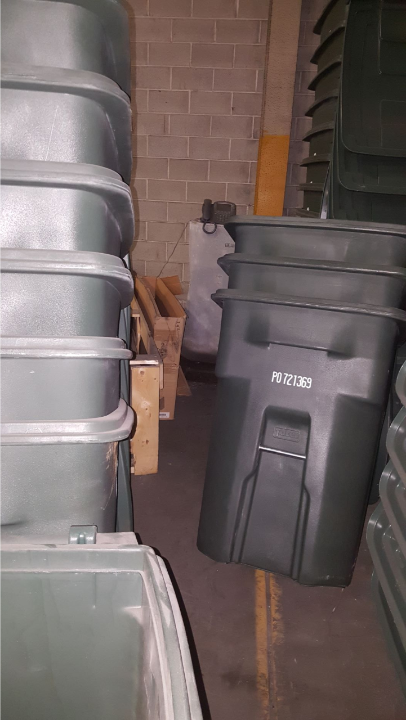In the previous article of this series I described the requirements of 40 CFR 265.33 – Testing & Maintenance of Equipment. That section of Part 265 specified what was required of a large quantity generator (LQG) or a small quantity generator (SQG) of hazardous waste to assure the proper operation of its required emergency equipment.
The purpose of this article: identify and explain the requirements of 40 CFR 265.34 – Access to communications or alarm systems for generators of hazardous waste under the emergency preparedness and prevention regulations of 40 CFR 265, subpart C. This article is the fifth in a series that will look closely at each section of 40 CFR 265, Subpart C and explain its requirements, how they apply to generators of hazardous waste, and what is required for compliance. Keep in mind that the regulations of your State may differ from these Federal regulations.
Hold on a minute! These regulations were revised and moved to a new location within Title 40 of the CFR by the Generator Improvements Rule. If your state has not yet adopted the Generator Improvements Rule, then this article is still applicable to you (but it won’t be for much longer). If your state has adopted and been authorized to enforce the Generator Improvements Rule, then these regulations no longer apply to you. Read: What is the status of the Generator Improvements Rule in my state?
To see an explanation of these regulations as revised by the Generator Improvements Rule you must refer to the following:
Not sure of your hazardous waste generator category? |
To see an explanation of the regulations prior to the revisions of the Generator Improvements Rule, please continue reading this article.
40 CFR 265.34 reads:
(a) Whenever hazardous waste is being poured, mixed, spread, or otherwise handled, all personnel involved in the operation must have immediate access to an internal alarm or emergency communication device, either directly or through visual or voice contact with another employee, unless such a device is not required under § 265.32.
(b) If there is ever just one employee on the premises while the facility is operating, he must have immediate access to a device, such as a telephone (immediately available at the scene of operation) or a hand-held two-way radio, capable of summoning external emergency assistance, unless such a device is not required under § 265.32.
Like this article? Subscribe to my Monthly Newsletter No marketing emails! |
The purpose of these regulations is to ensure that those emergency communication and alarm systems specified in §265.32 are accessible to the facility personnel who may have need of them in an emergency. Note the following derived from the text of the regulation:
- Paragraphs (a) & (b) of §265.34 apply to two different situations and each specifies its own requirements for that situation. In general,
- (a) applies to all personnel involved in hazardous waste management activities and requires immediate access to an internal communication or alarm system. It does not require external emergency communication.
- (b) refers to a situation where just one employee is on the premises while the facility is operating; it doesn’t specify the activity the employee may be engaged in (it may not be related to hazardous waste management). And it doesn’t require internal communication; instead it mandates a device capable of summoning external emergency assistance.
- §265.34 does not apply to all of the emergency equipment identified in §265.32, which includes: internal communication or alarm, telephone or hand-held two-way radio, fire suppression equipment, and water to supply fire suppression equipment. Instead, §265.34 applies to only two of the aforementioned emergency equipment: internal communication or alarm and telephone or hand-held two-way radio.
- Both paragraph (a) & (b) of the regulations use the term “immediate access” without defining exactly what this means. Is “immediate access” determined by the distance between the hazardous waste activity and the emergency communication device? The time it takes someone to reach the communication device or alarm? Its visibility? The answer: Yes. The regulations are deliberately vague on this point, leaving it up to you to determine what it meant by immediate access.
- The requirements for access to the emergency communication or alarm differ between §265.34(a) & §265.34(b):
- §265.34(a) requires “immediate access” which may be measured by the amount of time it takes to reach it. Whereas,
- §265.34(b) requires “immediate access” and “immediately available at the scene of operation”. This is a higher standard as it requires the device to be within a specific, though undefined, geographic area.
- §265.34(a) applies solely to the “internal alarm or emergency communication device”; whereas §265.34(b) applies to a device, “capable of summoning external emergency assistance…”
- Both paragraphs (a) & (b) include the conditioning statement that neither of these requirements applies if in §265.32 you determined that the equipment (internal and external communication) was not necessary.
- The applicable activities involving hazardous waste referenced in §265.34(a), “poured, mixed, spread, or otherwise handled” does not specifically mention the generation of hazardous waste, though the term “otherwise handled” seems broad enough to encompass any action taken with the hazardous waste of an SQG or an LQG including activities at the point of generation.
- The requirement for access to the internal alarm or emergency communication device in §265.34(a) is for “all personnel involved in the operation…” and not just RCRA trained facility personnel. This could include supervisors, contractors, and other employees who have not received annual hazardous waste training and have no prior awareness of your emergency communication or alarm system.
- The requirement for “immediate access” in §265.34(a) is expanded by the allowance of access “either directly or through visual or voice contact with another employee…” In other words, shouting to a coworker who then is able to access the communication device is acceptable for “immediate access”.
Interested in site specific training at your site that covers this topic, and more! Ask me about my Onsite Training |
Keep in mind that your state may add additional requirements on top of those of the USEPA described here. The easiest way to comply with this regulation is to ensure you have communication devices (internal and external) that are tested and maintained (see §265.33) and made immediately available to all facility personnel. Facility personnel must then be trained in the requirements of these regulations and the functioning your emergency communication system.
My next article in this series: 40 CFR 265.35 – Required aisle space


